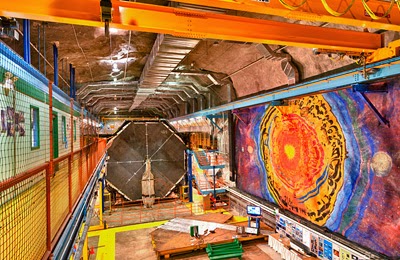 |
| Source: Fermilab link below |
The first step: accelerators
The collision of particles at high energy, either with other particles or with a stationary target, allows physicists not only to look at what's inside these particles, but also to use the energy of their collisions to create different, more massive and more exotic particles of matter. To create such high-energy collisions, scientists must use very powerful particle accelerators.
The second step: detectors
Unveiling the tiniest constituents of matter with accelerators is only half the battle. Physicists also need extraordinary particle detectors to observe what happens in high-energy collisions.
Detectors are instruments that count particles, visualize tracks, measure particle energies, record time of flight and identify different particles. Detectors can be as tiny as computer chips or as big as apartment houses, containing thousands of tons of steel and other material.
The third step: data analysis
Detectors are the product of international collaborations of physicists, all contributing their own expertise and the support of their home institutions. In return, each physicist receives access to the data recorded. To simplify the networking and data exchange within these worldwide collaborations, scientists at the European research laboratory CERN invented the World Wide Web. High-energy physics laboratories such as DESY, SLAC and Fermilab were among the first to offer Web pages in their home countries.
To analyze the enormous amount of data, particle physicists have always relied on some of the most powerful computers in the world, quickly adopting new computing technologies. The analysis of particle physics data takes place on powerful and cost-effective PC farms. Comparing simulated collision events with experimental results, sophisticated computer programs can identify the processes that took place in each collision, whether it takes place when two beams collide or at a fixed target. Physicists use the results to test theoretical predictions, improving our knowledge of crucial parameters, contradicting theoretical expectations and discovering new phenomena.
Fermilab: Particle Physics 101
Physics4Kids.com: Modern Physics Introduction
Comments